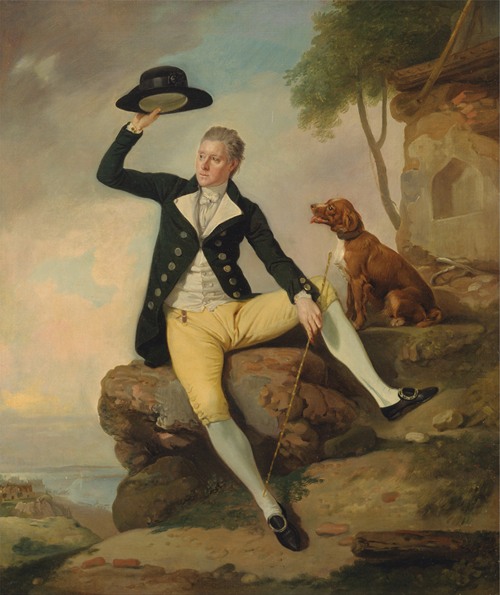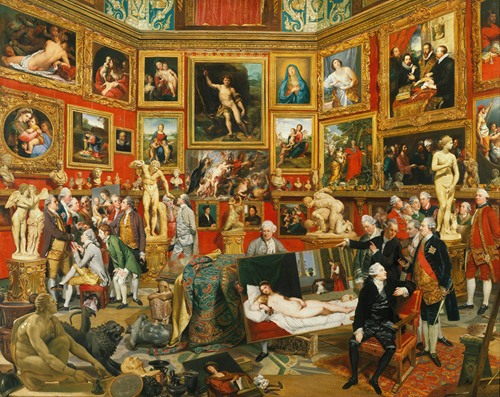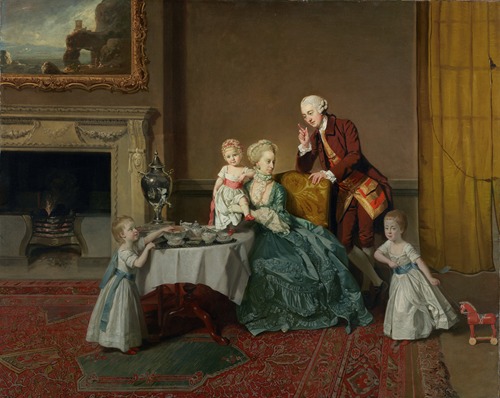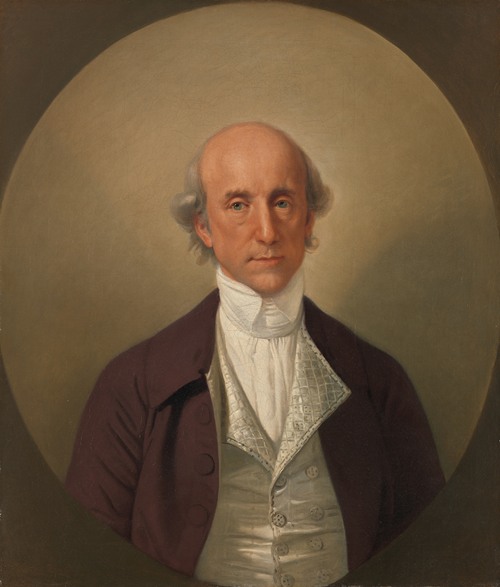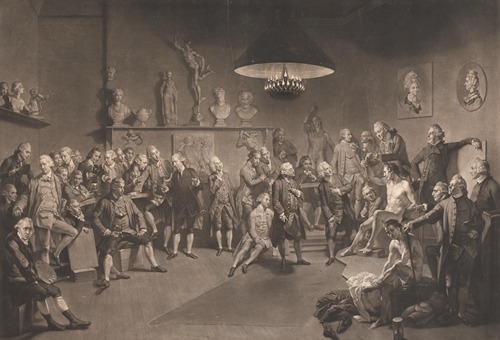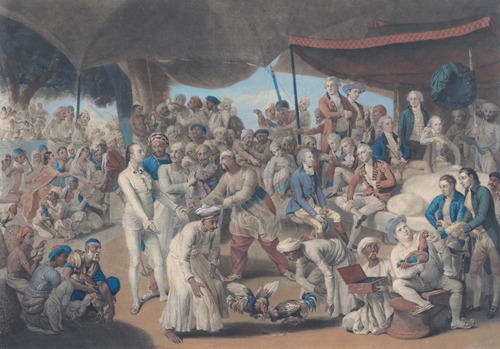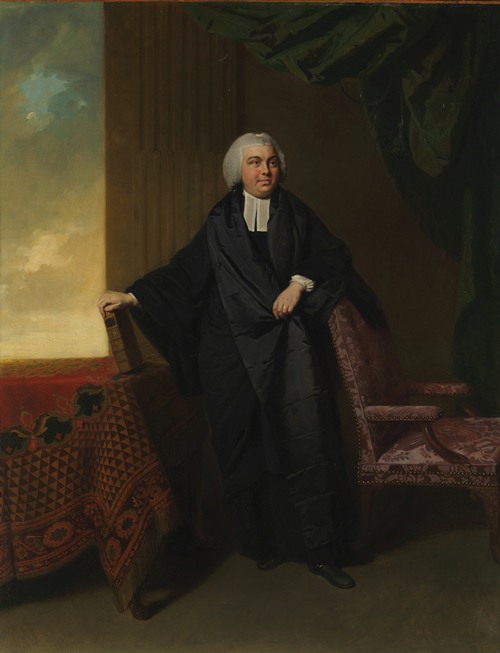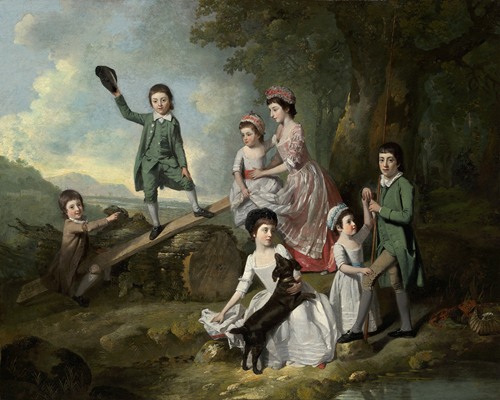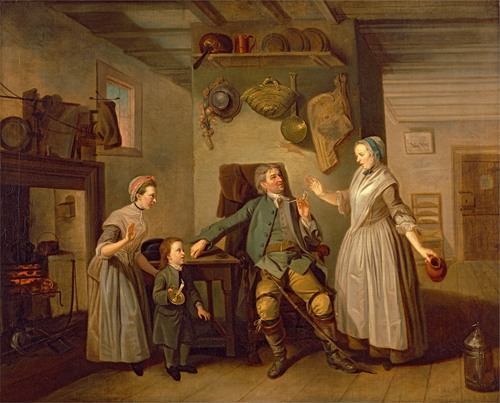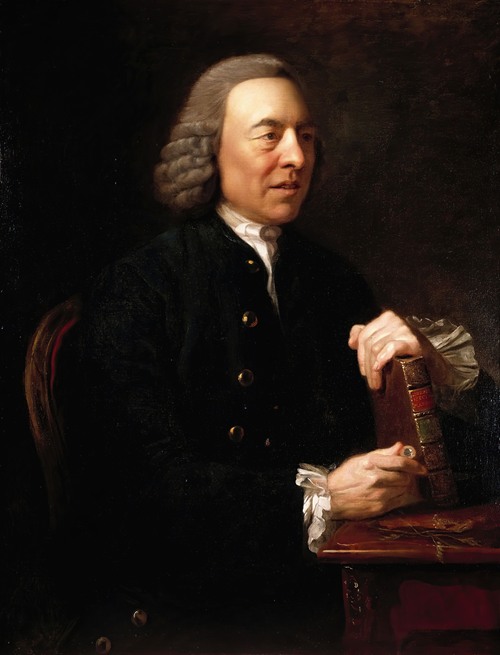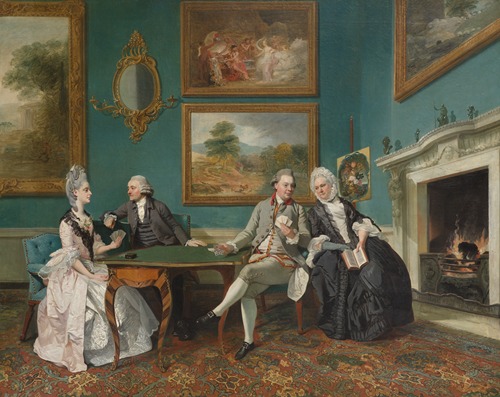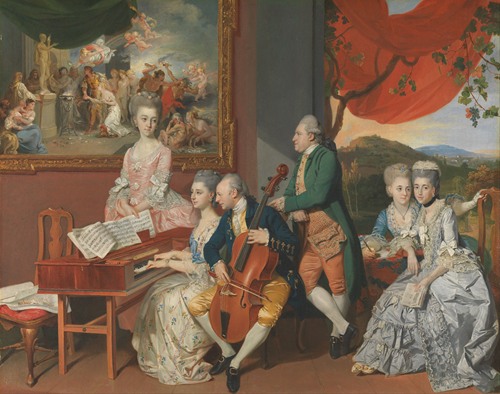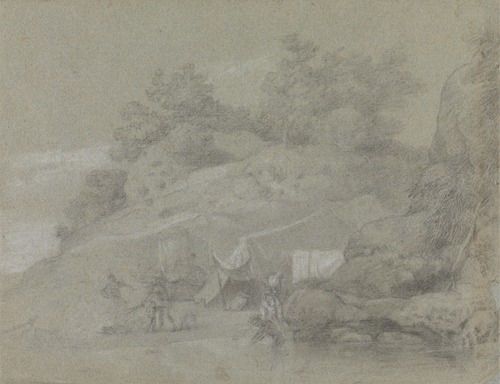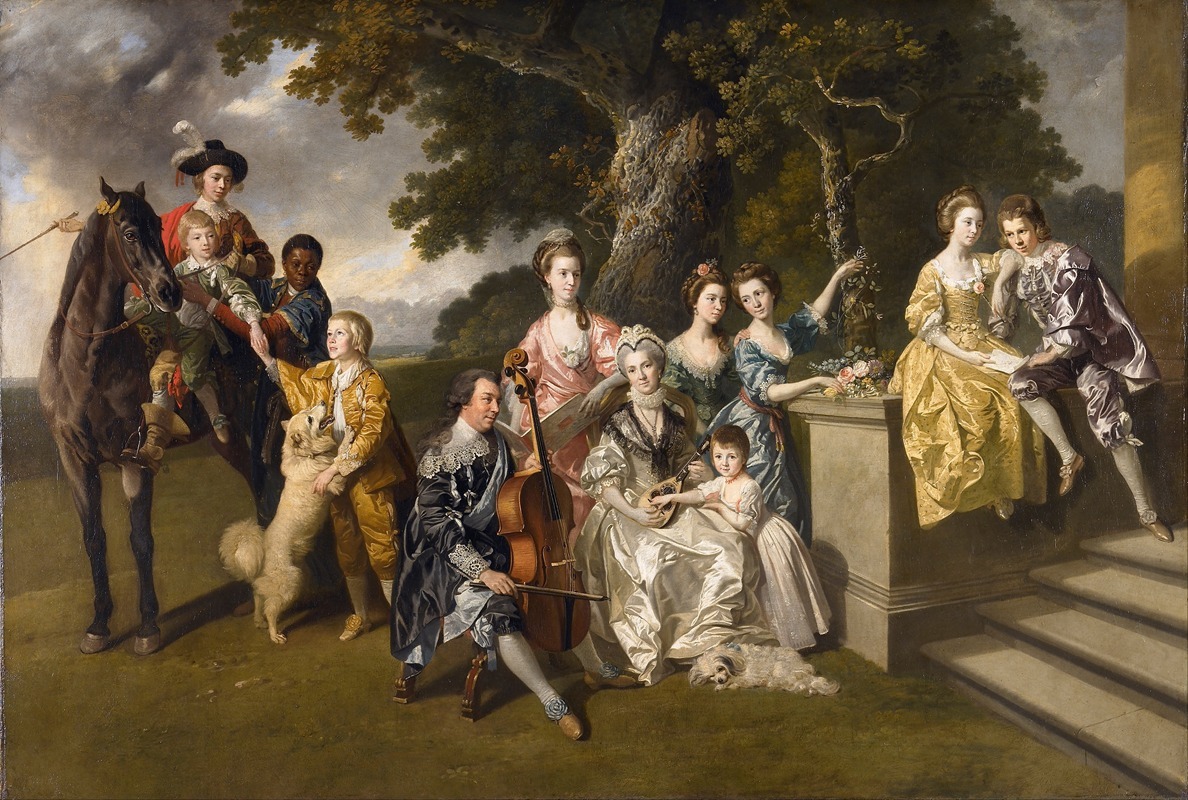

Johan Joseph Zoffany RA (born Johannes Josephus Zaufallij) was a German neoclassical painter, active mainly in England, Italy and India. His works appear in many prominent British collections such as the National Gallery, London, the Tate Gallery and in the Royal Collection, as well as institutions in Europe, India, the United States and Australia. His name is sometimes spelled Zoffani or Zauffelij (on his grave, it is spelled Zoffanij).
Johan Zoffany's former house at Strand-on-the-Green, Chiswick, London
Of noble Hungarian and Bohemian origin, Johan Zoffany was born near Frankfurt on 13 March 1733, the son of a cabinet maker and architect in the court of Alexander Ferdinand, 3rd Prince of Thurn and Taxis. He undertook an initial period of study in a sculptor's workshop in Ellwangen in the 1740s (possibly at the workshop of sculptor Melchior Paulus) and later at Regensburg with the artist Martin Speer. In 1750, he travelled to Rome, entering the studio of Agostino Masucci. In autumn 1760 he arrived in England, initially finding work with the clockmaker Stephen Rimbault (Zoffany's portrait of whom is now in Tate Britain), painting vignettes for his clocks.
By 1764 he was enjoying the patronage of the royal family, King George III and Queen Charlotte, for his charmingly informal scenes such as Queen Charlotte and Her Two Eldest Children (1765), in which the queen is shown at her toilette, with her eldest children, inside Buckingham House, and another, outdoors, with her children and her brothers. He was also popular with the Austrian Imperial family and in 1776 was created "Baron" by the Empress Maria Theresa.
Johan Zoffany was a Freemason and was initiated into the Craft on 19 December 1763 at The Old King's Lodge No 28.
A founding member of the new Royal Academy in 1768, Zoffany enjoyed great popularity for his society and theatrical portraits, painting many prominent actors and actresses, in particular David Garrick, the most famous actor of his day – Garrick as Hamlet and Garrick as King Lear – often in costume. He was a master of what has been called the "theatrical conversation piece", a sub-set of the "conversation piece" genre that arose with the middle classes in the 18th century. (The conversation piece – or conversazione – was a relatively small, though not necessarily inexpensive, informal group portrait, often of a family group or a circle of friends. This genre developed in the Netherlands and France and became popular in Britain from about 1720.) Zoffany has been described by one critic as "the real creator and master of this genre".
Zoffany painted a number of 'conversation pieces' featuring a violoncello – The Cowper-Gore family, Sharp Family, Morse & Cator family, and the family of Sir William Young. In c. 1780. he painted a portrait of the octogenarian professional cellist and composer Giacomo Cervetto.
In the later part of his life, Zoffany was especially known for producing huge paintings with large casts of people and works of art, all readily recognizable by their contemporaries. In paintings like The Tribuna of the Uffizi he carried this fidelity to an extreme degree: the Tribuna was already displayed in the typically cluttered 18th-century manner (i.e. with many objects hanging in a small area, stacked many paintings high on the wall), but Zoffany added to the sense of clutter by having other works brought into the small octagonal gallery space from other parts of the Uffizi.
Zoffany spent the years 1783 to early 1789 in India, where he painted portraits including the Governor-General of Bengal, Warren Hastings, and the Nawab Wazir of Oudh, Asaf-ud-Daula; an altarpiece of the Last Supper (1787) for St John's Church of England, Calcutta; and a vibrant history painting, Colonel Mordaunt's Cock Fight (1784–86) (Tate), described by historian Maya Jasanoff as ‘easily the liveliest illustration of early colonial India’. In the usual way, he sired several children by an Indian mistress, or ‘uppa-patni’. Returning to England, he was shipwrecked off the Andaman Islands. The survivors held a lottery in which the loser (a sailor) was eaten. William Dalrymple describes Zoffany as having been "the first and last Royal Academician to have become a cannibal".
Around the age of 27, Zoffany married the daughter of a court official in Würzburg. She accompanied him to London, but returned to Germany within a decade or so. Zoffany left for Florence in 1772, followed by young Mary Thomas, the daughter of a London glovemaker, who was carrying his first child. Whether they married in Europe is uncertain, though Zoffany's portrait, Mary Thomas, the Artist’s second wife, c1781-82, shows her wearing a wedding ring. Following the death of his first wife in 1805, Zoffany married ‘Mary Thomas … Spinster’ in accordance with Church of England rites.
Zoffany and Mary Thomas had five children, including a son who died in infancy, and four daughters. Their second daughter, Cecilia (1779–1830) was involved in a well-publicised child custody case in Guernsey in 1825. Zoffany died at his home at Strand-on-the-Green on 11 November 1810. He is buried in the churchyard of St Anne's Church, Kew. The painters Thomas Gainsborough and Joshua Kirby are coincidentally buried nearby.
